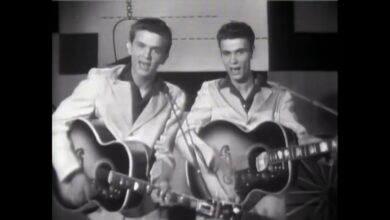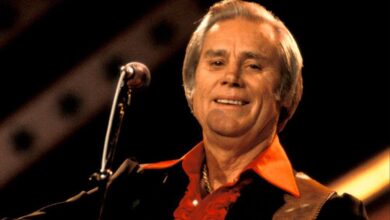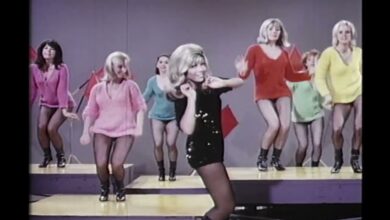Middle of the Road’s “Chirpy Chirpy Cheep Cheep” Delivers Bubblegum Bliss and Global Chart Glory in 1971
In the kaleidoscopic world of early ’70s pop, few songs captured the essence of lighthearted escapism quite like Middle of the Road’s “Chirpy Chirpy Cheep Cheep.” Released in 1971, the track was an irresistible slice of bubblegum pop, brimming with cheerfully nonsensical lyrics and an earworm melody that defied resistance. Though critics were divided, audiences were enthralled. The single quickly soared to No. 1 on the UK Singles Chart and topped charts across Europe, becoming one of the decade’s most unexpected pop juggernauts.
Middle of the Road, a Scottish pop group formed in Glasgow in the late 1960s, originally began their journey as Part Four. The lineup consisted of lead vocalist Sally Carr, drummer Ken Andrew, guitarist Ian McCredie, and bassist Eric McCredie. What set them apart wasn’t just their catchy melodies but Carr’s crystal-clear vocals and the band’s bright, almost carnival-like energy. When the band rebranded as Middle of the Road and moved to Italy, they found themselves in the orbit of European producers eager for accessible, upbeat pop music—a style that would soon become their signature.
“Chirpy Chirpy Cheep Cheep” wasn’t originally a Middle of the Road creation. The song was written by Italian composer Lally Stott, who also recorded the original version in 1970. While Stott’s rendition had minor success in certain regions, it was Middle of the Road’s interpretation that would ignite the charts. The band added a buoyant bounce and polished arrangement, turning the quirky song into a phenomenon. With its repetition of the titular phrase and joyful tone, the song felt tailor-made for singalongs and radio play.
Produced by Giacomo Tosti in Rome, the recording captured the exuberance of early Euro-pop, with layers of bubblegum harmonies, snappy handclaps, and vibrant instrumentation that leaned heavily on rhythmic tambourines and choral refrains. Sally Carr’s youthful yet precise delivery gave the song its focal point. She navigated the whimsical lyrics with infectious enthusiasm, making the strange tale of an abandoned child—surprisingly dark in theme—sound almost celebratory. The production walked a tightrope between kitsch and brilliance, and for many, it landed solidly on the side of charm.
Upon release, “Chirpy Chirpy Cheep Cheep” quickly became a radio staple across Europe. It climbed to No. 1 in the UK in June 1971 and remained there for five consecutive weeks, selling over a million copies in the process. It also reached the top of the charts in Germany, the Netherlands, Norway, and Switzerland, cementing Middle of the Road’s status as a leading voice in European pop. In the United States, however, the song failed to make a comparable impact, though it did reach the Billboard Hot 100 via a different version by Mac and Katie Kissoon.
Culturally, the song was polarizing. For some, it epitomized everything critics loved to loathe about pop music—its sugary repetition, lack of lyrical depth, and infectious simplicity. But for millions of listeners, it was a joyfully innocent anthem during a time when the world craved levity. With political turmoil and social change sweeping across the globe, a song like “Chirpy Chirpy Cheep Cheep” offered a welcome reprieve, however brief.
The track also marked a turning point for Middle of the Road. Its massive success propelled the band into the European spotlight, enabling them to tour extensively and record multiple follow-up hits, including “Tweedle Dee, Tweedle Dum” and “Soley Soley.” Their colorful aesthetic and catchy tunes made them a favorite in Germany, Italy, and Scandinavia, where the bubblegum pop genre found its most fervent fans. The song opened doors to television appearances and festival stages, and the band enjoyed a string of hits throughout the early 1970s.
Beyond the band, “Chirpy Chirpy Cheep Cheep” helped shape the trajectory of European pop. It proved that English-language pop music performed by non-UK-based producers could dominate international charts. This set the stage for the success of later acts like ABBA, whose polished, melodic sensibility bore traces of the bubblegum template Middle of the Road had helped popularize.
Numerous cover versions emerged in the wake of the song’s success. Aside from Mac and Katie Kissoon’s U.S. version, which featured more soulful vocals, parodies and reinterpretations became common. The song’s signature hook made it an easy target for novelty acts, children’s performers, and even punk bands seeking irony. Its legacy, for better or worse, was cemented as a pop culture oddity that refused to be forgotten.
At the time of its release, the band’s rise coincided with their relocation to mainland Europe, where they found greater creative freedom and a more welcoming industry. This strategic shift helped them remain relevant in countries where the UK press was often dismissive of their style. Despite the song’s critical reception being lukewarm, the public’s response was unwaveringly enthusiastic.
Today, “Chirpy Chirpy Cheep Cheep” endures as a relic of a specific era in pop history. It continues to appear on retro compilations, television soundtracks, and nostalgic playlists. While it may never be hailed as a lyrical masterpiece, it stands as a testament to the power of melody, timing, and charisma. It also showcases how a song’s emotional resonance doesn’t always rely on complexity—sometimes, pure joy is more than enough.
In terms of influence, the song’s unapologetic cheer and marketability would inform the development of future Europop acts. It laid a foundation for a style that emphasized simplicity, brightness, and universal appeal—qualities that would dominate Eurovision stages and European airwaves for decades to come.
Though Middle of the Road never quite replicated the stratospheric success of “Chirpy Chirpy Cheep Cheep,” they remained a respected and beloved act within their niche. Sally Carr’s voice, in particular, became an enduring symbol of the genre’s peak. The band continues to tour occasionally, their legacy wrapped in the vibrant echoes of a song that refuses to be silenced.
In the final analysis, “Chirpy Chirpy Cheep Cheep” isn’t just a novelty hit. It’s a cultural artifact, a sonic time capsule of an era when pop music didn’t have to be profound to be powerful. It carved out a place in music history not through critical acclaim, but through the sheer force of happiness—a tune that, once heard, never truly leaves.



